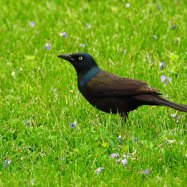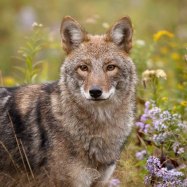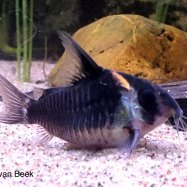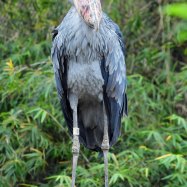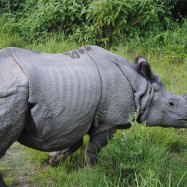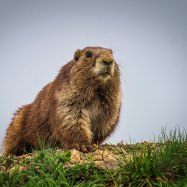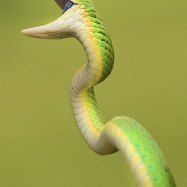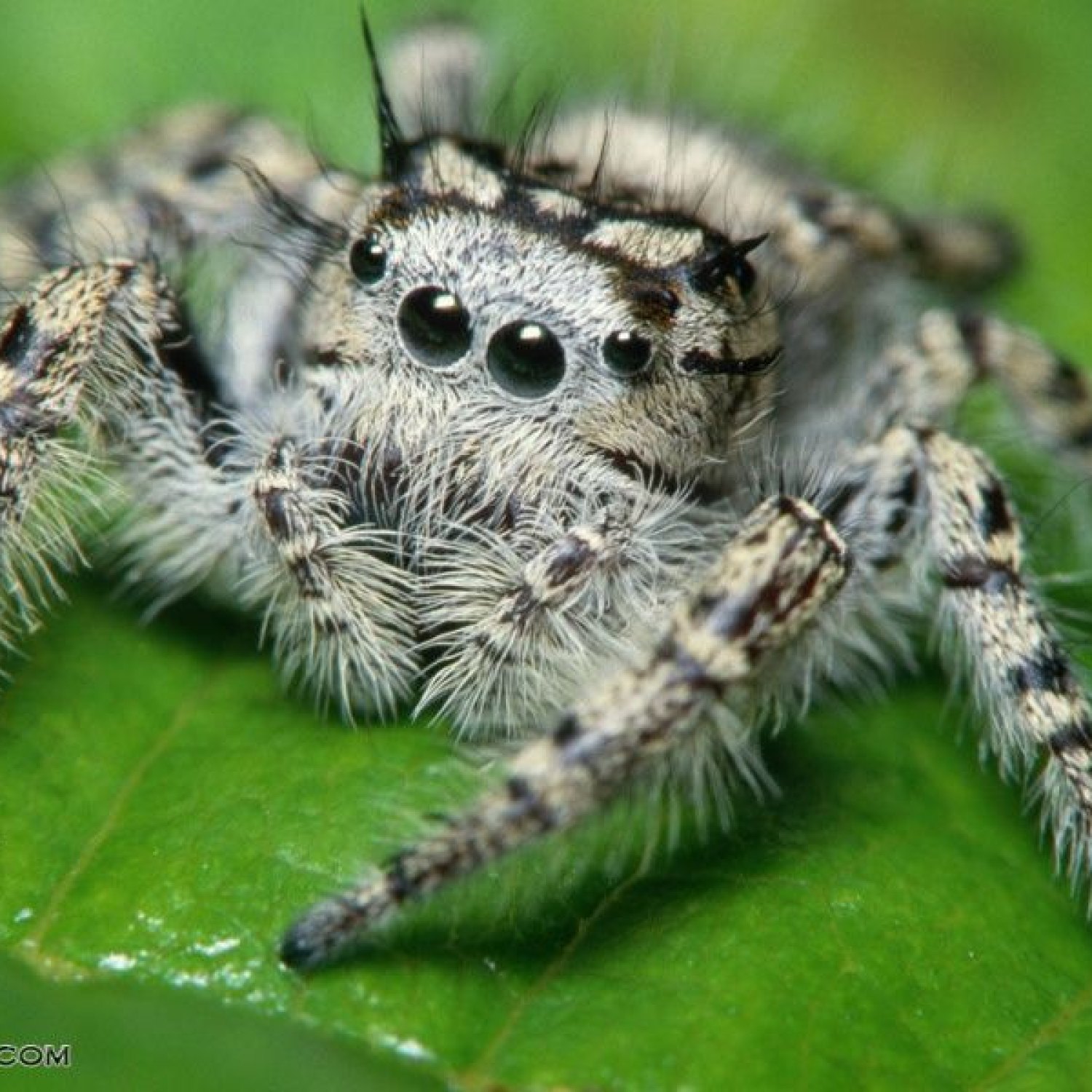
Spider
Varies depending on species
Spiders are fascinating creatures with a compact and rounded body shape. Their length varies depending on the species, but their presence can be found worldwide. With countless families and species, spiders provide important ecological roles such as keeping insect populations in check. But don't worry, most spiders are harmless and just want to catch their next meal. So, next time you see one, take a moment to appreciate these helpful arachnids.
Animal Details Summary:
Common Name: Spider
Kingdom: Animalia
Habitat: Various habitats including forests, grasslands, deserts, and wetlands
A Definitive Guide to Spiders: Nature's Intriguing Creations
When we think of spiders, the first thing that comes to mind is often fear. These eight-legged creatures have been portrayed as dangerous and deadly predators in movies and books for years. However, there is so much more to spiders than meets the eye. In reality, spiders are fascinating creatures with unique adaptations and abilities that make them essential to the balance of ecosystems Spider. In this comprehensive guide, we will delve deeper into the world of spiders, from their physical characteristics to their behavior and role in the natural world.The Basics: Who Are Spiders?
Scientifically known as Araneae, spiders are one of the largest groups of arthropods, classified under the kingdom Animalia. They belong to the phylum Arthropoda, the same group as insects, and have a class of their own, called Arachnida. The order they belong to is also called Araneae, and this is where they get their scientific name.There are over 45,000 known species of spiders found in different parts of the world, making them one of the most diverse and successful groups of animals. These fascinating creatures can be found in a variety of habitats, including forests, grasslands, deserts, and wetlands. They can be found on every continent except Antarctica, and some even thrive in human-made environments such as buildings and gardens.
What Makes Spiders Stand Out?
One of the most distinctive features of spiders is their feeding method. Unlike many other insects, spiders are strictly carnivorous, meaning they feed on other animals Siberian Ibex. They are skilled hunters and use a range of tactics to catch their prey, including creating webs and ambushing their victims. This feeding method not only ensures the survival of the spider but also contributes to the balance of the ecosystem by controlling insect populations.But what truly sets spiders apart from other arthropods is their ability to create silk. Spiders have specialized glands in their abdomen that produce silk, which they use to create webs, wrap their prey, and even use as a form of transportation. This silk is incredibly strong, with some species' webs being able to hold up to 1,000 times their body weight.
The Anatomy of Spiders
The body shape of spiders varies depending on the species, but they are generally compact and rounded. They have an exoskeleton, meaning their skeleton is located on the outside of their body. This exoskeleton is made of a flexible material called chitin, which provides support and protection for the spider's internal organs.Spiders have eight legs, each with seven segments, and they use these legs for a range of purposes, including walking, hunting, and climbing. They also have two body segments, the cephalothorax, and the abdomen. The cephalothorax is the front segment, housing the spider's brain, eyes, mouthparts, and legs. The abdomen is where the spider's internal organs, including the reproductive and digestive systems, can be found.
Colors and Shapes of Spiders
One of the most intriguing aspects of spiders is the wide range of colors and shapes they come in. Each species has its unique coloration and markings, allowing them to camouflage themselves according to their environment and evade predators. Some species are brightly colored, such as the colorful peacock spider, while others have patterns and markings that make them almost invisible, like the bark spider.Spiders also come in a wide range of sizes, with some species as small as a pinhead, while others can reach up to 12 inches in leg span. Their varying sizes and shapes play an essential role in their survival and give them the advantage of adapting to different environments.
The Infamous Spider Bite
As mentioned earlier, spiders have long been portrayed as dangerous and deadly, mainly due to their venomous bites. While it is true that some spiders have venom, only a small percentage of those venomous spiders are harmful to humans. The majority of spiders' venom is used to paralyze their prey and is not strong enough to harm humans.One of the most alarming spider bites is that of the black widow spider, found in North America. Although it can be dangerous, the bite is rarely fatal and, with proper treatment, can be easily managed. Other spiders, such as the brown recluse spider, have a more potent venom, but these bites are also relatively rare and rarely result in serious consequences.
The Role of Spiders in the Ecosystem
Spiders may seem like small and insignificant creatures, but they play a vital role in maintaining the balance of the ecosystem. As natural predators, they help control the population of insects, making them an essential part of pest control. They also contribute to pollination by feeding on insects that would otherwise harm plants.Moreover, webs built by spiders also help capture dust and other microscopic particles, which helps keep the air clean. This process is especially crucial in areas with high levels of pollution, making spiders an essential part of maintaining a healthy environment.
Unique Adaptations of Spiders
Spiders have evolved over millions of years, adapting unique characteristics that have contributed to their survival and success as a species. Some of these adaptations include the various ways spiders use their silk, such as building webs and creating egg sacs to protect their young.Another fascinating adaptation of spiders is their ability to molt. As spiders grow, they shed their entire exoskeleton and grow a new one. This process continues throughout their life, allowing them to adapt to changes in their environment and grow in size.
Endangered Spiders
Although spiders are incredibly diverse and successful, many species are facing threats to their survival. Habitat loss and destruction, pesticide use, and climate change are some of the factors contributing to the decline of certain spider populations.Some of the critically endangered spider species include the Gooty sapphire ornamental tarantula, found in India, and the Brazilian whiteknee tarantula, found in Brazil. These spiders are highly sought-after by collectors, making them targeted by illegal poaching. Conservation efforts are crucial in protecting these and other endangered species from extinction.
Spiders and Humans
The relationship between spiders and humans has mostly been one of fear and misunderstanding. However, with the rise of education and awareness, people are starting to understand the importance of spiders in maintaining the balance of the ecosystem and are beginning to appreciate their unique characteristics.In many cultures, spiders are seen as positive symbols, representing creativity, patience, and determination. They have also been used as medicine in some ancient traditional practices. Today, spiders are the focus of scientific research and have been used in various fields, including medicine, engineering, and biomimicry.
In Conclusion
Spiders are incredible creatures that continue to fascinate and surprise us. From their unique physical characteristics and feeding methods to their role in maintaining the balance of the ecosystem, they are undoubtedly one of nature's finest creations. With education and conservation efforts, we can learn to coexist with these fascinating creatures and appreciate the vital role they play in our world. So the next time you come across a spider, take a moment to appreciate its remarkable adaptations and essential place in the natural world.

Spider
Animal Details Spider - Scientific Name: Araneae
- Category: Animals S
- Scientific Name: Araneae
- Common Name: Spider
- Kingdom: Animalia
- Phylum: Arthropoda
- Class: Arachnida
- Order: Araneae
- Family: Various
- Habitat: Various habitats including forests, grasslands, deserts, and wetlands
- Feeding Method: Carnivorous
- Geographical Distribution: Found worldwide on every continent except Antarctica
- Country of Origin: N/A
- Location: N/A
- Animal Coloration: Varies depending on species
- Body Shape: Generally compact and rounded
- Length: Varies depending on species
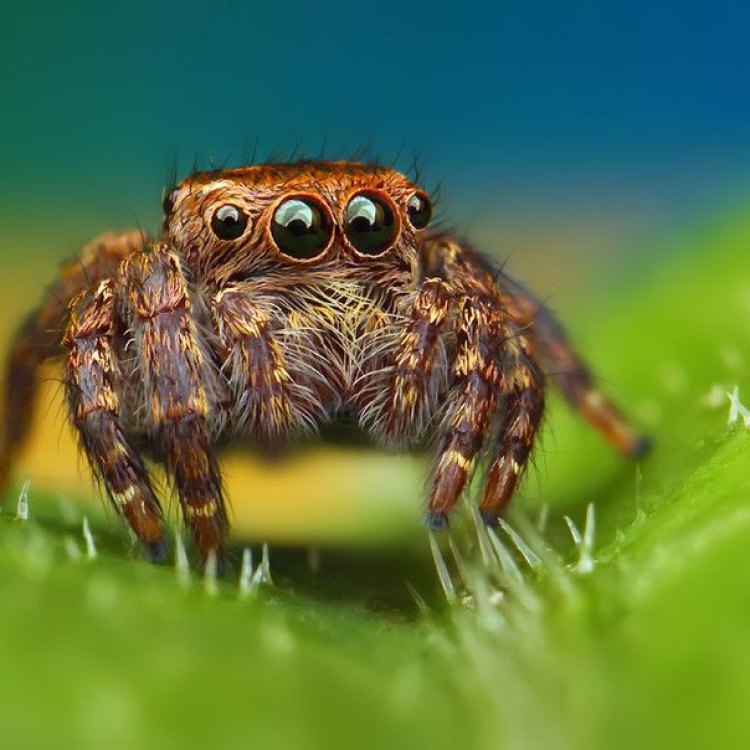
Spider
- Adult Size: Varies depending on species
- Average Lifespan: Varies depending on species (usually a few months to several years)
- Reproduction: Sexual
- Reproductive Behavior: Varies depending on species
- Sound or Call: Most spiders do not produce sounds or calls
- Migration Pattern: Varies depending on species
- Social Groups: Varies depending on species (some are solitary, while others live in colonies)
- Behavior: Varies depending on species
- Threats: Predators, habitat loss, pesticides
- Conservation Status: Varies depending on species
- Impact on Ecosystem: Spiders play an important role as predators in ecosystems by controlling populations of other arthropods
- Human Use: Some spider species are used in medical research or for their silk
- Distinctive Features: Eight legs, two body segments, silk-producing ability
- Interesting Facts: 1. Spiders are not insects, but arachnids. 2. They have the ability to produce silk, which is used for various purposes including building webs, catching prey, and protecting eggs. 3. Some spiders are venomous and use their venom to immobilize their prey. 4. Spiders are found in a wide range of habitats, from deserts to forests and even underwater. 5. The largest known spider is the Goliath bird-eater, which can have a leg span of up to 30 centimeters. 6. Some spiders display interesting behaviors, such as the male peacock spider's courtship dance. 7. Spiders molt their exoskeletons as they grow. 8. Most spiders have poor eyesight and rely on other senses, such as touch and vibration, to navigate their environment.
- Predator: Varies depending on species
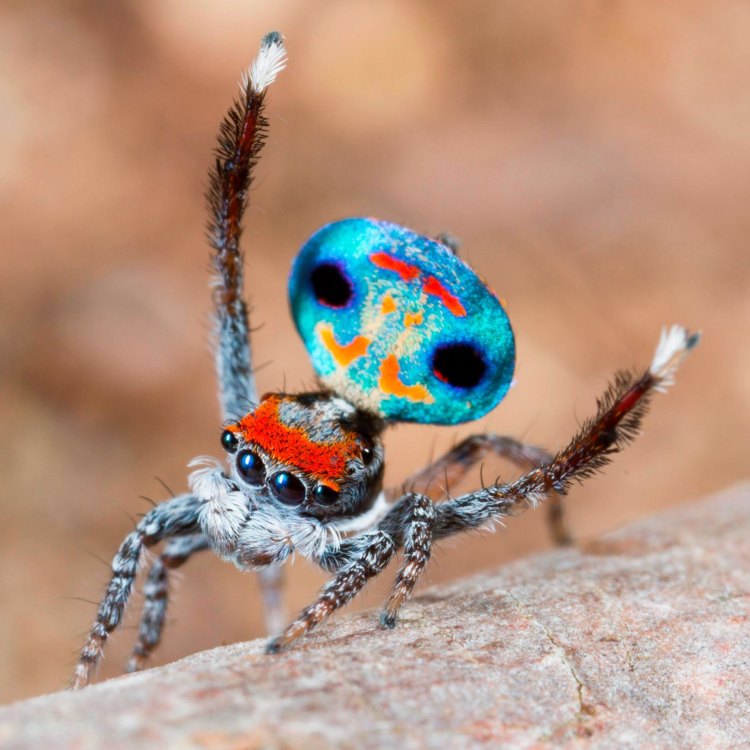
Araneae
The Fascinating World of Spiders: Silent But Deadly Predators
When you think of a spider, the first image that may come to mind is a creepy, crawly creature lurking in the corner of your room. Despite their somewhat scary reputation, these eight-legged arachnids are actually fascinating creatures with unique features and behaviors. In this article, we will delve into the world of spiders, exploring their diverse characteristics, habitats, and roles in the ecosystem.Adult spiders come in a variety of sizes, with the largest known species being the Goliath bird-eater, which can have a leg span of up to 30 centimeters PeaceOfAnimals.Com. However, the size of a spider can vary greatly depending on the species. Some are as tiny as a grain of sand, while others, such as tarantulas, can reach the size of a human hand. In terms of lifespan, spiders also have a wide range, with some living only a few months and others surviving for several years.
As with size and lifespan, reproductive behavior also varies among spider species. Most spiders reproduce sexually, with males using specialized structures to transfer sperm to the female during mating. However, there are exceptions to this, such as the asexual reproduction of some species.
One of the most unique features of spiders is their ability to produce silk. This silk is used for a variety of purposes, such as building webs, catching prey, and protecting eggs. The silk produced by spiders is incredibly strong, in fact, it is known to be one of the strongest natural materials Spadefoot Toad. This remarkable ability allows spiders to create intricate webs and catch their prey with ease.
However, not all spiders use webs to catch prey. Some species actively hunt for their food, while others, such as trapdoor spiders, ambush their prey by hiding in a burrow and waiting for an unsuspecting victim to pass by. Regardless of the method, spiders are efficient predators and play an important role in controlling populations of other arthropods in their habitats.
Despite their predatory nature, spiders are also vulnerable to threats in their environment. Predators such as birds, lizards, and other spiders may feed on them, while habitat loss and pesticide use also pose significant threats to their survival. Some species of spiders are also in danger of extinction, ranging from vulnerable to critically endangered status, due to loss of habitat and overcollection for the pet trade.
Spiders can also have an impact on ecosystems. As predators, they help to keep populations of insects and other arthropods in check, making sure that these populations do not get out of control. This ultimately helps to maintain balance in the ecosystem. Without spiders, we could potentially see a rapid increase in the number of insects, which would have a negative impact on other species and even human health.
Interestingly, some spider species have been found to have potential benefits for humans. Some species, such as the brown recluse and Brazilian armed spider, have been studied for their venom, which has shown promise in medical research for treating conditions such as stroke and heart disease. Other species, particularly orb-weaving spiders, have been studied for their silk and its potential use in creating stronger, more durable materials.
There is also a fascinating aspect to spider behavior. While most spiders do not produce sounds or calls, some species of jumping spiders have been found to make sounds by rubbing their body parts together. Male peacock spiders also have an interesting courtship dance, where they use their brightly colored markings and movements to attract a mate. Spiders may also molt their exoskeletons as they grow, shedding their old skin to reveal a new one underneath.
Spiders can be found in a wide range of habitats, from deserts to forests and even underwater. These adaptable creatures can thrive in different environments as long as they have a food source and shelter. While their habitats may vary, spiders are found on every continent except Antarctica, showing their resilience and ability to survive in different conditions.
It is important to note that spiders are not insects, but arachnids. While they may share similar features, such as multiple jointed legs, spiders are distinct from insects in several ways. For one, they have two body segments instead of three and have eight legs instead of six. Additionally, spiders have specialized mouthparts for injecting venom, which they use to immobilize their prey.
Most spiders have poor eyesight and instead rely on other senses, such as touch and vibration, to navigate and locate their prey. Their unique set of sensory organs allows them to detect slight movements and vibrations, helping them to accurately capture their prey.
In conclusion, spiders may not always be considered the most lovable creatures, but they are undoubtedly fascinating and play significant roles in the ecosystem. From their silk-producing abilities to their unique behaviors and diverse habitats, they are silent but deadly predators, essential for maintaining a healthy balance in nature. So the next time you come across a spider, instead of shrieking in fear, take a moment to appreciate these remarkable creatures and their place in the world.
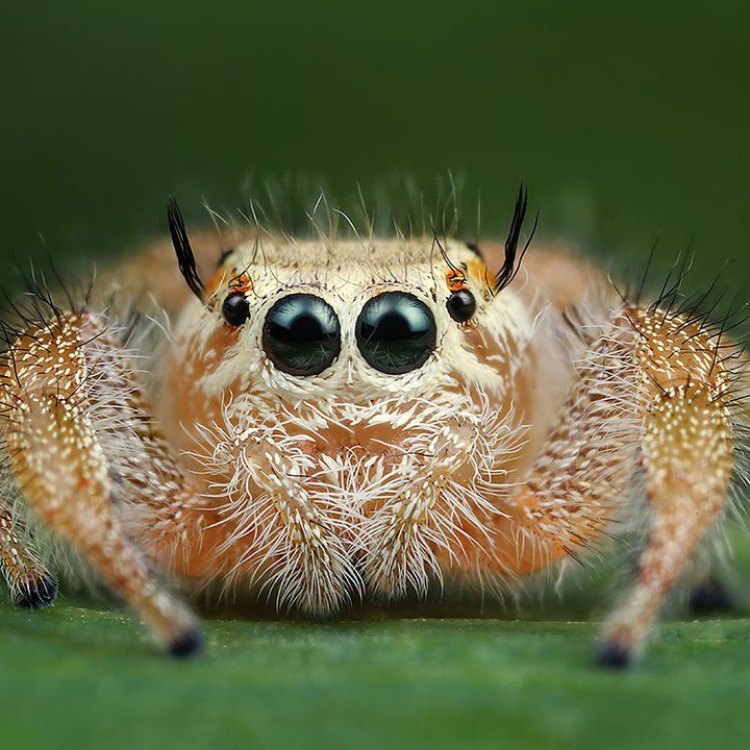
A Definitive Guide to Spiders: Nature's Intriguing Creations
Disclaimer: The content provided is for informational purposes only. We cannot guarantee the accuracy of the information on this page 100%. All information provided here may change without prior notice.





